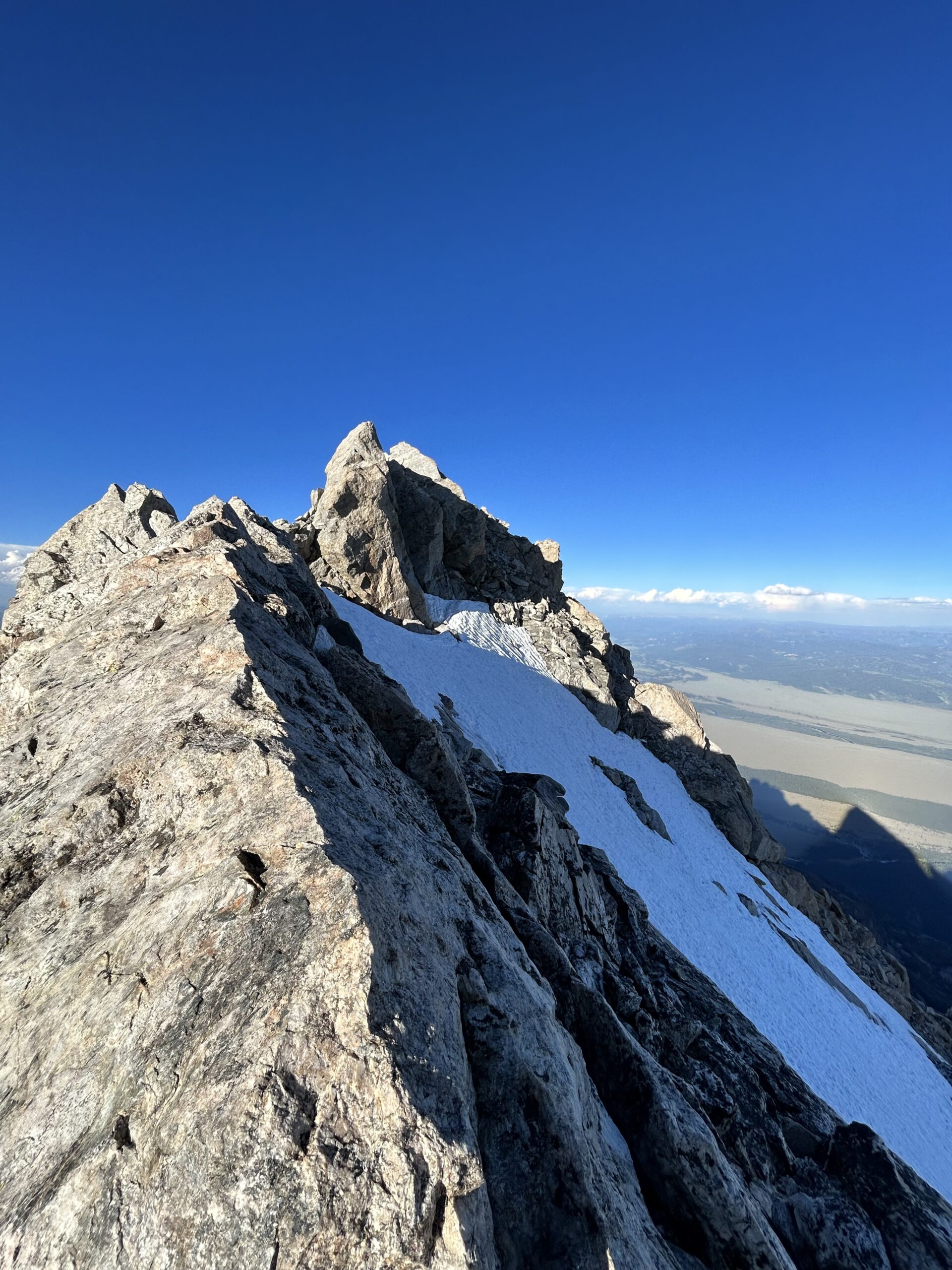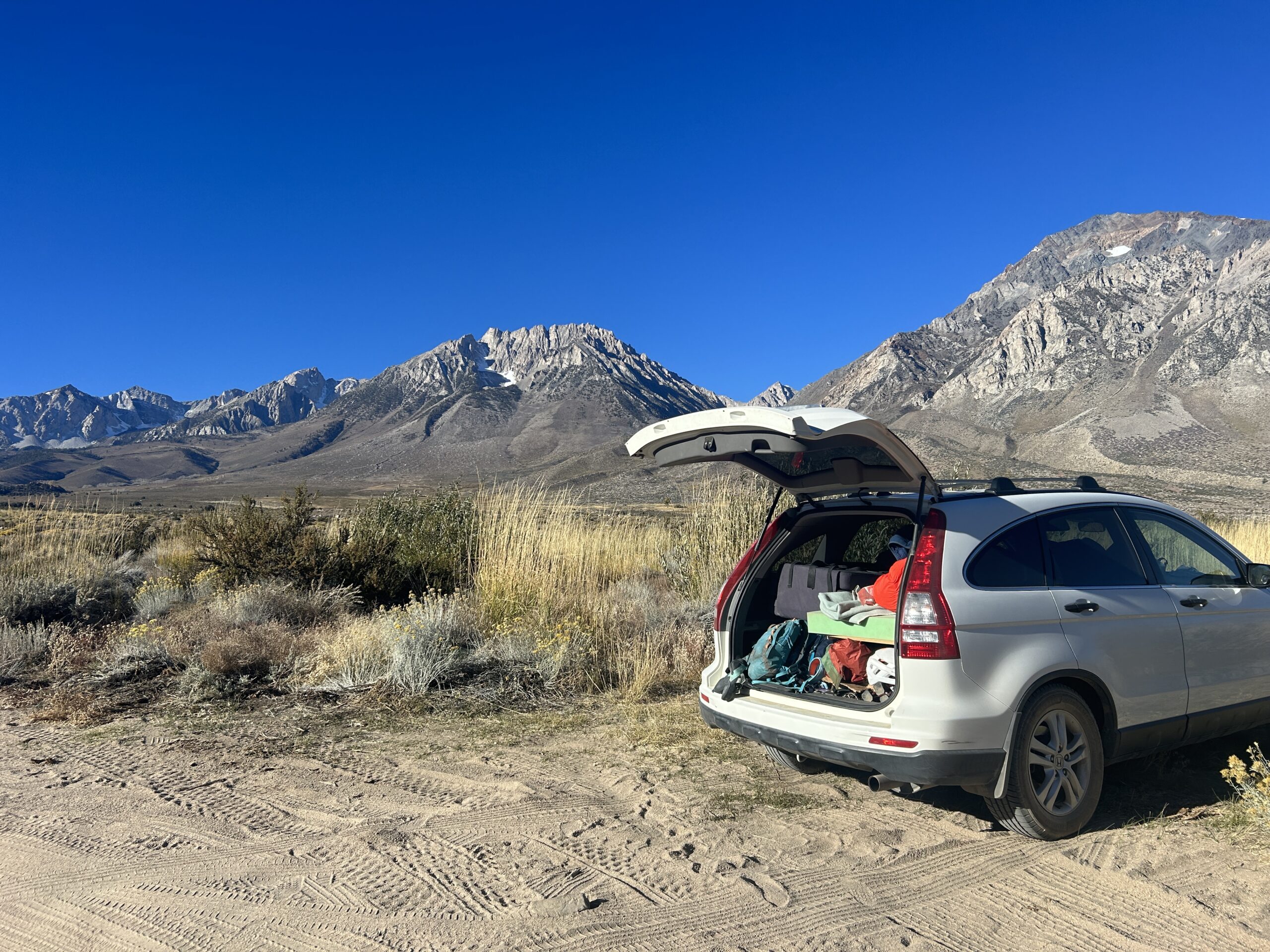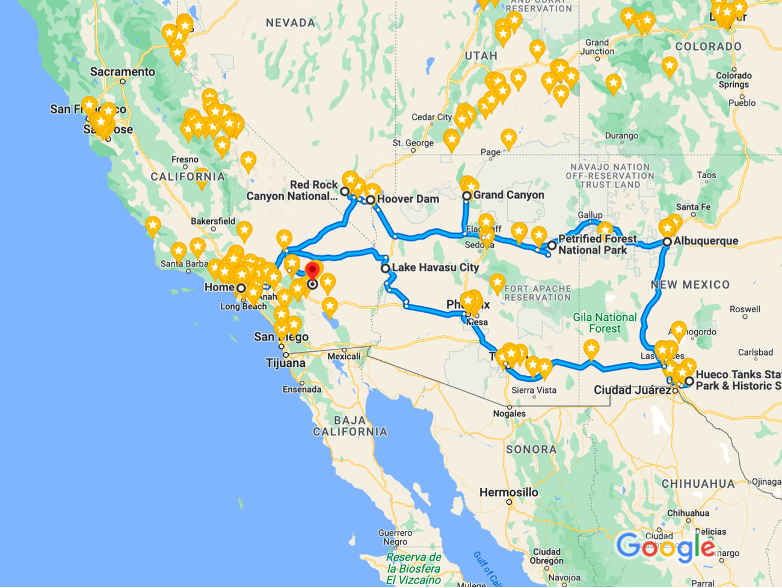
For the better part of the past 1 year, I’ve been living in my 2011 Honda CRV. I’m a climbing dirtbag. At the start of my dirtbag era, I kept my apartment, because I thought this era would quickly end. But I have quickly made it a comfortable lifestyle. After not visiting the apartment for months at a time, I decided to get rid of the home base all together and opt for a PO Box instead. The car is pretty cozy, and when I did visit the apartment I suffered from terrible insomnia. In retrospect, the choice was obvious, but there was lots of turmoil involved in making the decision, which I addressed in a post on TinyBuddha. Here, I’m focusing on how I managed to get so cozy living the #crvlife.
Building out the CRV:
- Remove Seats: This era of CRV has back seats that do not fold flat. I took out the passenger side and attached middle seat to have space for my bed platform. Initially I left them in, but its much better without them in terms of storage and stability.
- It’s pretty straightforward to remove the seats once you pop off the plastic bolt covers. There are 4 bolts and you need a socket wrench to undo them. The seats are quite heavy also. I saved the bolts and used them to attach my sleeping platform.
- Sleeping setup: This is basically the only “build” I actually did. I sleep with my head toward the front of the car and prop the passenger seat forward when I sleep so I can dangle my feet.
- Materials:
- sheet of plywood – standard size, composite because it’s less splintery
- 4×4 – 12′
- 1×1 – 12′
- package of screws & corresponding bit
- drill
- L shaped metal brackets
- straight metal brackets
- wood glue
- the bolts I unscrewed
- socket wrench
- Platform: I had home depot cut my plywood to size. For me that was 70″ long and 26″ wide. When I got it home, I cut a diagonal corner for the back passenger side of the platform, so it could be propped up on the lip of the wheel well (this is one “leg” of the bed).
- Framing: For sturdiness, I added two strips of 1×1 framing along each long side of the bed platform. I attached it with screws and wood glue.
- Front Legs: The front “legs” were made from one solid block of wood. I used 24″ cuts of my 4×4 and stacked them on top of one another, attaching them together with straight metal brackets and wood glue to one another. Then I attached them to the car with the L brackets, straight brackets, and bolts from the seat removal. This block of wood is not at the end of the plywood, it’s around a foot or so in from the edge, and supports the shoulder area of the sleeping platform. I attached the platform to the front “legs” with L brackets and screws. and attaches to the 1×1 framing with L brackets.
- Back Legs: The back “legs” are each done pretty differently. The outside edge rests on top of the car itself. For me, that provided the most snug fit, and most space underneath the platform for storage. For the other back leg, I used the remainder of the 4×4 piece, it’s just under 12″. I attached it to the framing using L brackets. It’s very sturdy and falls around mid-calf, rather than at the very back of the platform. That allows me access to the things under it more conveniently.
- Comfiness: I use a 6′ piece of 4″ upholstery foam from JoAnn fabric as my mattress. I put a sleeping pad on top of that for warmth. Then I use a 0 F sleeping bag and a wool blanket on top of that in winter.
- Materials:
- Electricity & warmth: I use a Jackery and a heating pad when it gets below 30 F. I just use a small battery to charge my phone at night and I get about 2 nights off a charge. I have a solar lantern for when it gets dark and I want to read. But typically I sleep when the sun says it’s time.
- Curtains: I don’t use them! I can cover a window or two if needed with a towel, but I normally camp in rural places rather than in town. Plus, without curtains you can see the stars better 🙂
- Storage: A roof rack is in my future. But for now it all fits inside. Food in the driver’s side back footwell. Crash pad next to bed, clothing in bags under that. Climbing & camping gear under the bed. Toiletries, coats, water and electronics under the passenger back footwell. And miscellaneous in front seat.

Living on the Road:
Budgeting and Finance:
- Frugal Living: I keep expenses low. Most of my costs are health insurance and food. Climbing is free.
- Food: I use the Eureka Spark single burner camp stove and I cook a lot of simple, repetitive things. Protein bread + avo + egg = chef’s kiss. One pro of living in your car in winter is that you don’t need to buy ice or anything if it’s cold out and food stays good for a long time.
- Passes and Permits: I normally sleep on BLM land, which I find via Gaia, but I also have a national parks pass.
Hygiene and Comfort:

- Shower Solutions: It depends on location
- I belong to Planet Fitness, which works great in bigger cities. Plus you can sleep in the parking lot if needed.
- Hostels and gas stations often have showers for a fee, which is convenient.
- An occassional hotel night comes in handy to recharge, refill, and shower all at once.
- In between showers, I jump in lakes/rivers.
- If I’m not showering that day, I wipe down sweaty areas with antibacterial wipes (not baby wipes). Antibacterial wipes keep bacteria levels down on the skin, which is what causes BO.
- Laundry: Laundromats can be a great place to get wifi and stay warm if it’s chilly on a winter evening.
Safety and Security:
- Knowledge: I try to stay in places I know and if I’m going somewhere new I arrive in daylight and camp with friends if possible. I always give myself permission to leave an area at any point and I try to have a backup plan if I’m sleeping somewhere I’ve never been.
- Vehicle Maintenance: I get regular car checkups. That said, I’ve popped a couple tires on dirt roads at this point, so it helps to be prepared. I check to make sure my spare is inflated, plus I’m a AAA member, and I have a portable air pump and some patching spray for temporary fixes.
- Security: I don’t keep valuables in my car, but I do always lock my car and keep things out of sight.
So far, the #crvlife has been good to me. It’s hard to believe a year passed this quickly. It has made me realize how little I really need to feel at home and happy.






